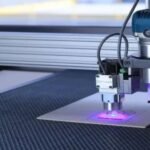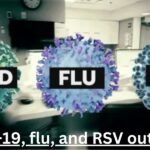Scientists working on the device have recognized the first neutrino interactions detected by the Short-Baseline Near Detector (SBND) at Fermi National Accelerator Laboratory.
The SBND partnership has been designing, developing, and building the detector for almost ten years. Following several months of cautiously activating every detector subsystem, the much-anticipated moment finally arrived.
According to David Schmitz, an associate professor of physics at the University of Chicago and co-spokesperson for the SBND project, “a detector sees its first neutrinos not every day.” “We’ve all spent years working toward this moment and this first data is a very promising start to our search for new physics.”
The Short-Baseline Neutrino (SBN) Program at Fermilab is completed with SBND, which will be essential in resolving a long-standing puzzle in particle physics. A multinational effort has been made to get SBND to reach this position. A multinational team including 250 physicists and engineers from Brazil, Spain, Switzerland, the United Kingdom, and the United States constructed the detector.
The greatest explanation for how the universe functions at its most basic level is the Standard Model. Particle physicists utilize it as the gold standard to compute anything from extremely rare decays to high-intensity particle collisions in particle accelerators. But even though the Standard Model has undergone extensive testing, it is not perfect. Furthermore, abnormalities that could indicate the existence of a novel kind of neutrino have been detected by several tests during the past 30 years.
The second most common particle in the universe is a neutrino. Even though they are quite common, they are very challenging to analyze because they rarely appear in detectors and only interact through gravity and the weak nuclear force.
There are three flavors, or sorts, of neutrinos: tau, electron, and muon. The fact that these particles oscillate between different flavors—from muon to electron to tau—may be the oddest thing about them.
The number of each form of neutrino that should be present at various distances from a neutrino source is relatively well-known to scientists. However, those predictions were not supported by evidence from a few earlier neutrino experiments.
Scientist Anne Schukraft of Fermilab said, “That could mean that there are more than the three known neutrino flavors.” This new sort of neutrino would not interact through the weak force, in contrast to the three existing types. We would only see them if there was an anomaly in the measurement of the tau, electron, and muon neutrino counts.”
At Fermilab, the Short Baseline Neutrino Program will seek neutrino oscillation and for signs that might indicate the existence of this fourth neutrino. For the Short Baseline Neutrino Program, SBND is the near detector while ICARUS, which began data collection in 2021, is the far detector. That same year, MicroBooNE, a third detector, completed its recording of particle collisions with the same neutrino beamline.
Unlike earlier short-baseline measurements using accelerator-made neutrinos, Fermilab’s Short Baseline Neutrino Program has a close detector in addition to a far detector. While ICARUS measures the neutrinos after they may have oscillated, SBND measures them as they were created in the Fermilab beam.
Thus, the SBN Program will provide definitive information regarding the original composition of the neutrino beam, whereas prior experiments had to rely on conjecture.
“Understanding the anomalies seen by previous experiments has been a major goal in the field for the last 25 years,” said Schmitz. “Together SBND and ICARUS will have an outstanding ability to test the existence of these new neutrinos.”
Past the search for novel neutrinos
Apart from collaborating with ICARUS to hunt for a fourth neutrino, SBND has a fascinating physics initiative of its own. SBND will observe 7,000 interactions each day, more neutrinos than any previous detector of its sort, due to its proximity to the neutrino beam. Researchers can analyze neutrino interactions with previously unheard-of precision because of the enormous data sample. Future experiments, like the long-baseline Deep Underground Neutrino Experiment, or DUNE, that use liquid argon to detect neutrinos, will heavily rely on the physics of these interactions.
A stream of particles is sent hurtling through the detector whenever a neutrino and an atom’s nucleus meet. To deduce the characteristics of the spectral neutrinos, physicists must take into consideration every particle generated during that collision, both visible and unseen.
straightforward nuclei such as hydrogen and helium are very straightforward to predict, but argon is used in SBND, as in many other contemporary neutrino studies, to trap neutrinos. Because argon atoms have 40 nucleons in their nucleus, interactions with argon are more complicated and challenging to comprehend.
“We will gather ten times as much information on neutrino-argon interactions as we have from all of the past experiments combined,” stated Ornella Palamara, a physicist at Fermilab and secondary SBND spokesman. “So, the analyses that we do will also be very important for DUNE.”
But scientists at SBND will be watching for more particles than just neutrinos. Given the proximity of the detector to the particle stream, it is plausible that other surprises could be observed by the cooperation.
“Schukraft stated, “There might be things outside of the Standard Model that are produced as a byproduct of the beam that the detector would be able to see, but they have nothing to do with neutrinos.”
Dark matter is one of the main mysteries the Standard Model cannot explain. SBND would only detect light particles, but those hypothetical particles might offer the first indication of what is known as a “dark sector.”
“Up until now, ‘direct’ dark matter searches for massive particles have not produced any results,” stated Andrzej Szelc, professor at the University of Edinburgh and coordinator of SBND physics.
Theorists have developed numerous dark sector models involving lightweight dark particles that could be generated in a neutrino beam, and SBND will test the validity of these models.
The story of SBND doesn’t end with these neutrino signatures. For the next few years, the cooperation will keep running the detector and examining the millions of neutrino interactions that have been gathered.
“This marks the beginning of a long journey we’ve been working towards for years,” said Palamara. “It’s the start of a new era for collaboration.”
















